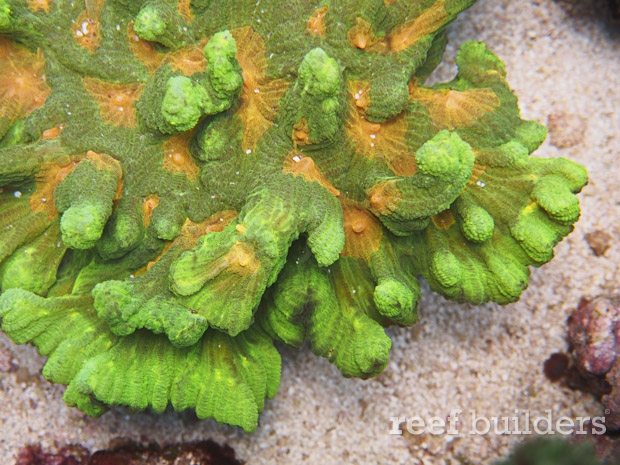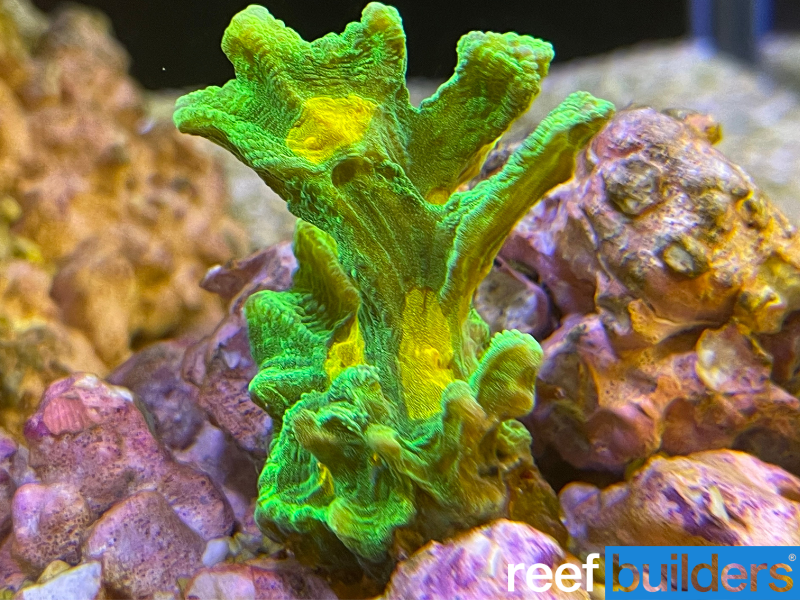Think of easy, beginner LPS corals and you’ll probably think of Duncan corals, Candy Canes, and Micro Lords maybe, but there’s one frag that’s positively shining in our tank despite us not giving it any special care whatsoever – the Space Invader Pectinia.
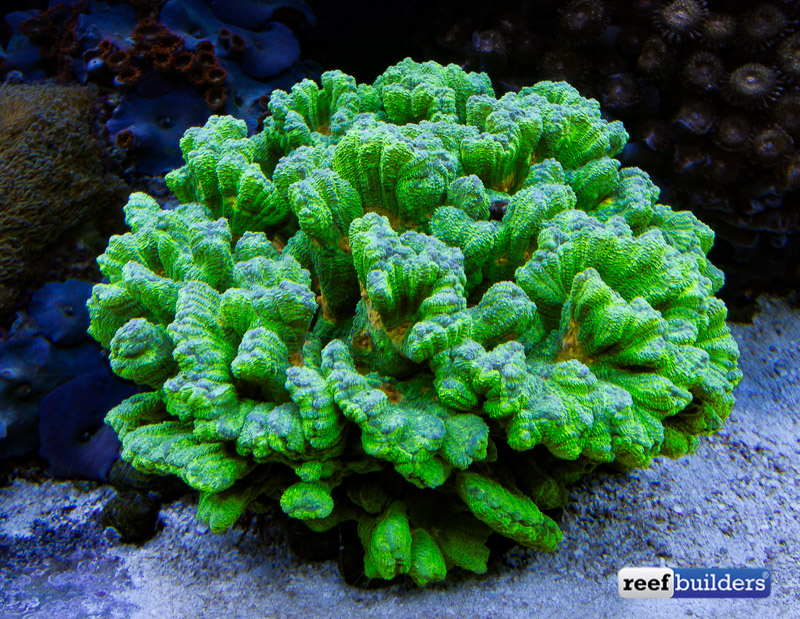
The Space Invader goes by the proper name of Pectinia alcicornis, a member of the Merulinidae family which includes the chalices Echinopora and Mycedium, the former Favia, but also Catalaphyllia, Trachyphyllia, and dozens of other LPS genera. P.alcicornis is widespread across the Western Central Pacific where it can be found on anything from muddy bottoms to rocky outcrops and reef rubble, where its irregular branching colonies make up a tangle of thin fluted blades and spires. The spires all route back to a corallite, which in the case of the Space Invader is buttercup yellow, the bright green and yellow combo giving it its trade name.
Pectinia alcicornis may also be called the leaf or antler coral, but for our purposes, Space Invader Pectinia will suffice just fine. They are popular aquarium corals if a little under-represented in stores, losing favor to flatter named Chalices like Raja Rampage and Bugatti, and Rainbow pectinia, but for their shape, color, and ease of keeping, we highly recommend them.
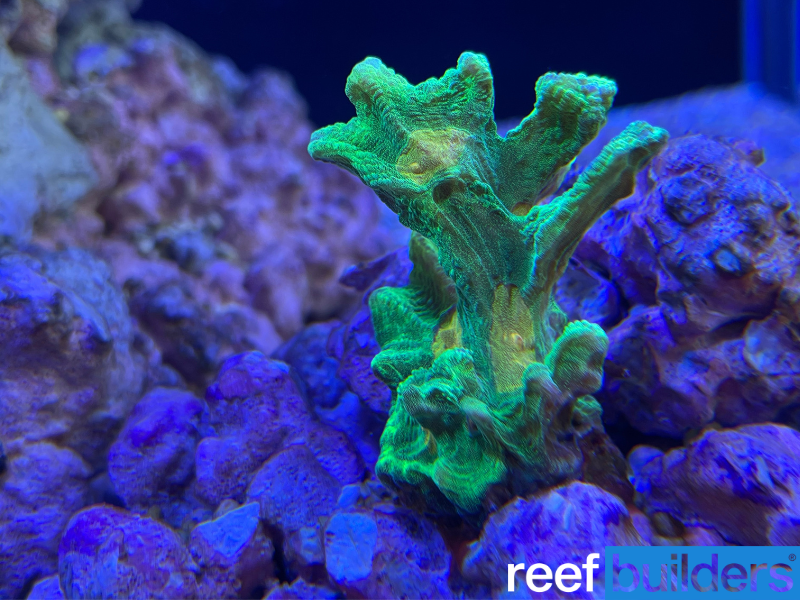
Lighting
The Space Invader doesn’t need high lighting and we’ve had it under par values of 50-150, although it endured much higher when on our frag rack, but similarly, virtual shade when it fell off and lay on its side on the substrate for weeks. Jake Adams observed a Rainbow Pectinia in the back of a cave once…For flow, we’ve had it in as low as 20X tank turnover and as high as 60X. It really is that hardy, and although its tissue varies from tight skin to puffed up, we haven’t found any correlation between light and flow, or even food. We give it a liberal dose of Amino acids every now and again, scatter copepods in the tank, and if it’s lucky it will grab some frozen fish food. We maintain parameters close to natural seawater, only with an enhanced pH, but that should be a given for any coral. It puts out short, sub-two-inch sweeper tentacles every now and then, but hasn’t reached or done any damage to any coral around it.
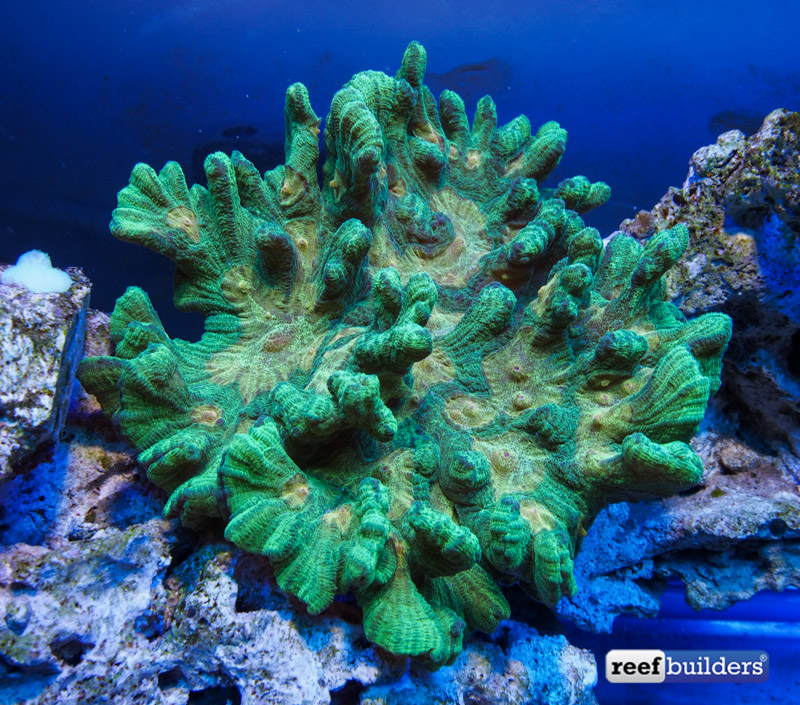
Space Invader Pectinia is available in frag form from other reefers, or 4-6” maricultured colonies from Indonesia. The yellow mouths look impressive whatever the size, and this coral really pops under blue LED, but grow-out this coral to 10-12” and it becomes a really impressive, stand-alone, showcase hard coral. Yes, we are all at risk of having too much green in our tanks but the sculpted form, color, and ease of keeping make the Space Invader Pectinia one green and yellow coral that’s worthy of collecting.
